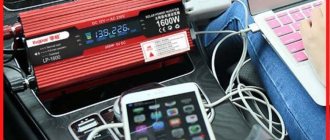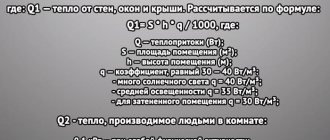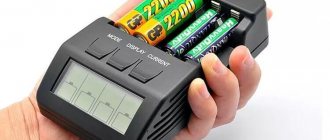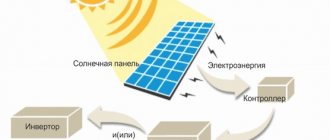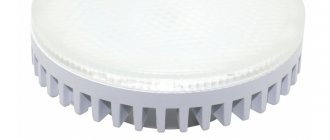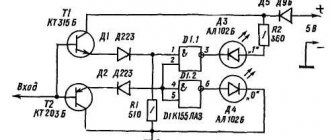Inverter (UPS, uninterruptible power supply) 220V 400 Rucelf UPI
RUB 10,102 Buy online
Inverter (UPS, uninterruptible power supply) 220V 500 Energy Guarantor
RUB 12,900 Buy online
Inverter (UPS, uninterruptible power supply) 220V 600 Rucelf UPI
RUB 16,076 Buy online
Inverter (UPS, power supply) 220V Shtil SW250SL
RUB 16,200 Buy online
Inverter (UPS, power supply) 220V Shtil SW250
RUB 16,480 Buy online
Inverter (UPS, uninterruptible power supply) 220V 750 Energy Guarantor
RUB 17,200 Buy online
Inverter (UPS, uninterruptible power supply) 220V 800 Rucelf UPI
RUB 17,265 Buy online
Inverter (UPS, power supply) 220V Shtil SW250LD
RUB 17,580 Buy online
Inverter (UPS, power supply) 220V Shtil SW500L
RUB 17,850 Buy online
Inverter (UPS, uninterruptible power supply) 220V 500 Energy UPS Pro
RUB 18,850 Buy online
Inverter (UPS, uninterruptible power supply) 220V 1000 Rucelf UPI
RUB 20,006 Buy online
Inverter (UPS, power supply) 220V Shtil SW1000L
RUB 20,740 Buy online
Inverter (UPS, power supply) 220V Shtil SW500SL
RUR 21,280 Buy online
Inverter (UPS, uninterruptible power supply) 220V 1000 Energy Guarantor
RUB 21,400 Buy online
Inverter (UPS, uninterruptible power supply) 220V 1400 Rucelf UPI
RUB 23,340 Buy online
Inverter (UPS, uninterruptible power supply) 220V 800 Energy UPS Pro
RUB 24,150 Buy online
Inverter (UPS, power supply) 220V 1500 Energy Guarantor
RUB 25,700 Buy online
Inverter (UPS, power supply) 220V Shtil SW1000SL
RUB 26,300 Buy online
Inverter (UPS, uninterruptible power supply) 220V 1000 Energy UPS Pro
RUB 29,450 Buy online
Inverter (UPS, power supply) 220V 2000 Energy Guarantor
RUR 34,350 Buy online
Inverter (UPS, uninterruptible power supply) 220V 1700 Energy UPS Pro
RUB 34,600 Buy online
Inverter (UPS, uninterruptible power supply) 220V 2300 Energy UPS Pro
RUB 48,300 Buy online
Inverter (UPS, uninterruptible power supply) 220V 3400 Energy UPS Pro
RUR 59,650 Buy online
Inverter (UPS, uninterruptible power supply) 220V 5000 Energy UPS Pro
RUR 86,750 Buy online
A home voltage inverter is an electrical device that combines the functions of two electrical appliances with different purposes, a UPS and a voltage stabilizer. The main goal of the work is to prevent possible breakdown of connected energy consumers due to poor quality power supply and frequent power outages. The device is capable of converting direct current 12 Volts into alternating current 220V, and protecting devices powered from the network from high drops and overvoltages. And depending on the power value, it can be used both for the whole house and for a specific electrical appliance. But in the ratings of inverters, models with low power parameters lead. We will try to understand the question of which inverter to choose for your home for low-power household appliances, sliding exit gates, alarms, and heating equipment.
Which is the best inverter to buy for your home?
In an online store or on the Russian market, today we can find a wide selection of such inventions, differing in technical characteristics and external design. And each of them is shared with a battery , which can be inside the case, or connected using special connectors outside. Single-phase inverters with external batteries are the most popular, as they are equipped with a battery charger. And by connecting rechargeable batteries, they achieve autonomous operation of about 48 hours. Household inverters of this type are considered the ideal choice for gas boilers of the most famous import brands (single-circuit and double-circuit, with wall-mounted and floor-mounted versions). Many are successfully used in private country housing, residential buildings, apartments, and dachas, due to their wide temperature range.
But in order to ensure high-quality and safe operation of household electrical devices for a long period of time, you need a reliable uninterruptible power supply for the home with optimal technical parameters. Let's look at the most important ones that you should pay attention to first.
What power do you need a voltage converter from 12 to 220 for home
Considering this issue, we can immediately note that the starting current of any electric motor is several times greater than the rated power. Then for a 100 W circulation pump, a 100 W voltage converter will be very small. It would be more correct to install a device with a small percentage of reserve, for example a 500 W inverter . Also, for low-power gas boilers from modern manufacturers, uninterruptible power supplies of 750 and 1000 Watts are often used.
Uninterruptible power supply based on inverters: how to choose the right system?
Modern modifications of MAP Energia inverters have proven themselves to be reliable and high-quality devices with wide capabilities. How to choose the right system for your needs from the entire range of offers without overpaying for unnecessary functions? Let's imagine a simple algorithm.
1) Power selection
It must be borne in mind that the corresponding parameters indicated in the name of the MAP refer to the maximum power that the inverter is capable of maintaining for 20-30 minutes. The rated power indicator is 1.5 times less, so:
- MAP SIN “Energy” Pro 4.5/48 has a maximum power of: 4.5 kW; nominal: 3kW, peak: 7kW
- MAP SIN “Energy” Pro 6.0/48 has a maximum power: 6 kW; nominal: 4 kW, peak: 9 kW.
When calculating, keep in mind that the maximum long-term load (over 2 hours) on the inverter is not recommended above 60% of the rated power.
How to calculate the power of consumers in a private house? You need to open the electrical distribution panel (MSB) and determine which machines you will reserve, and then help you calculate all the necessary parameters:
Power and consumption calculator
If you need to quickly estimate the power, then you can roughly calculate it like this:
- for a gasified house with an area of 100-200 sq. MAP 6.0/48 model is enough
- up to 300-350 sq.m – 9.0/48
- if above you should pay attention to models from 12 kW.
2) Autonomy
How to choose batteries? To do this, we need to understand the average load power on the inverter and the desired battery life in the event of a power outage. The first can be obtained from our power calculation calculator, and the second is a matter of your desire. In the descriptions of our kits you can find a “Power/Autonomy” table, which will make it easy to navigate. Keep in mind that the average load is significantly lower than the sum of the power of all devices, because Rarely does the entire load work simultaneously.
In the presented kits we use reliable and high-quality batteries of the Delta DTM and HR series, Leoch series DJM with a service life of 10-12 years, optimally suited for working conditions with inverters. To inverters with the digital designation “—/24” - 2 or more batteries are connected in series, in multiples of 2 (4-6-8 pcs.) (additional batteries are connected in parallel and in series). For maximum power above 6 kW, we recommend using the “—/48” circuit, i.e. with connection of 4 or more batteries, multiple of 4 (8-12-16 pcs.)
3) Connection
The installation diagram depends on which consumers will be connected to the uninterruptible power supply. Let's consider several options:
a) Inverters with a power of up to 3 kW can be connected via plugs/sockets . Those. you have an uninterruptible power supply with sockets that you can connect to in case of a power outage
b) Reservation of part or all consumers with a single-phase connection at home : in this case, you identify the machines, and the installer supplies them with power through an inverter.
c) Some consumers with a three-phase connection at home : if the electrical circuit allows, all machines in the panel of selected consumers are connected to one or two phases.
d) Reservation of the entire house connected according to a three-phase scheme or if it is impossible to allocate consumers to one phase. There are two ways:
- using ACF - an automatic phase switch that will connect all phases in the event of a power outage and power them from the inverter
- put three inverters, one for each phase, but with one battery bank
Our specialists have extensive experience in implementing all possible installation scenarios with minimal cost for the customer. The cost of installation depends on the complexity and degree of preparation of the object. You can see examples of some of our work on the blog.
What kind of protection should an uninterruptible power supply for a home have?
When purchasing a UPS for a gas heating boiler, it is recommended to choose a model with a built-in stabilizer. Thanks to this element, the connected electrical appliance will be constantly protected from high and low voltage, overloads, short circuits, and network interference. And stop working in emergency situations, without any violations.
It is also recommended to take an inverter with a charger that has intelligent battery protection. It helps control the charge and discharge levels of connected batteries. This will significantly increase their service life.
When choosing an uninterruptible power supply for your home, you should also pay attention to its recommended temperature range. Since a simple inverter, unlike a frost-resistant one, will not be able to operate without failures in a poorly heated room.
buy a single-phase voltage inverter for your home directly on our website. The online store presents the sale of modern uninterruptible power supplies with a built-in stabilizer, famous in Russia. Capable of flawlessly performing their functions around the clock, providing effective and reliable protection throughout the working day. You can order a wall-mounted or floor-mounted inverter with delivery throughout Moscow, St. Petersburg, and regions of Russia. A 1-year manufacturer's warranty is provided.
Additional features and options
Working with a generator
If you are faced with power outages for a long time (16 hours or more) or you are designing an autonomous power supply, you can consider an uninterruptible power supply system in conjunction with a generator, and there are two options:
- Automatic start of the generator if the battery charge is close to the minimum: the Dominator MAC will give a signal to start the power plant and turn it off when the battery charge runs out.
- Manual start of the generator . With a minimum battery charge, with appropriate settings, the MAC begins to emit sound signals. You start the power plant and switch the reversing switch - the power goes to the inverter, which continues to power the load and charges the battery in parallel.
In combination with a MAC through a surge protector, we recommend using inverter or brush type generators, because they provide a fairly high-quality sinusoidal signal at the output and will not damage household and multimedia equipment with pulsed emissions.
Power boost
Often management companies of cottage villages limit the maximum power allocated to the site, and connecting additional power is unreasonably expensive. But there is a way out - using a Hibrid series MAC inverter, which is capable of pumping up the missing power from the batteries during consumption peaks, which, as a rule, are not very long.
Voltage stabilizers and UZM-51M
MAP Energia inverters do not have a built-in voltage stabilizer, like all professional inverters on the market. In this regard, we recommend installing additional protection for your consumers:
- If the voltage “jumps”, sags, or is below/above the norm, you should install a voltage stabilizer in front of the MAC.
- If the voltage is stable, we recommend using a voltage control relay with a built-in variator (impulse protection) - UZM 51M.
- For air entry into the house, there is an additional SPD (lightning protection).
TOP 3 - the best converter models and their technical characteristics
The rating is based on popularity and is a selection of the best, according to experts, car inverters of 2020.
AVS IN-2000W
Car inverter 12 V 220 high power up to 2 kilowatts. Available in an aluminum housing to aid heat dissipation. There is a built-in cooling cooler. The body has convenient mounting holes, through which it can be attached to the wall of a truck or minibus. Capable of delivering current up to 10 Amps.
Advantages of AVS IN:
- USB connector, which allows you to integrate charging for a cell phone or navigator without an additional adapter;
- powerful built-in short circuit protection;
- long and reliable operation - up to 5 years of continuous operation;
- convenient power key.
Minuses:
- high cost - 7 thousand rubles or more;
- too short wires for connecting through the battery terminals;
- inability to integrate with the cigarette lighter;
- heavy weight - more than 2 kilograms;
- There is only 1 socket for connection, so you need a separate tee to power several devices.
ROBITON R200
150 Watt inverter designed to convert DC to AC. It is possible to connect a laptop, chargers, and various electrical tools. There is a convenient USB connector for additional capabilities. Made using advanced technologies, it has a multi-level protection system:
- short circuit;
- overheat;
- overload;
- polarity reversal;
- insufficient input voltage.
The 12 to 220 converter has an F type power socket - the contacts are grounded. During overheating it automatically turns off. Availability of a built-in fan.
WESTER MSW250 12-220V+USB
In terms of the ratio of output power and ease of use, the inverter from the manufacturer Wester is called the best among its analogues. It produces a stable voltage of 250 Watts, the peak load can reach up to 500 Watts. Easily integrates with the cigarette lighter - no need to stop on the road to connect the adapter to the battery terminals.
The body is black, metal. There is a possibility of mounting on the inside of the car. For connection with a car plug, a wire with a special tip is provided. By inserting it into the cigarette lighter, you can once again avoid weighing down the socket on the instrument panel.
Here are the advantages of this converter noted by experts:
- the presence of an LED indication that allows you to monitor the operation of the device, overheating, and sleep mode;
- relatively low cost - from 1,700 rubles;
- the presence of a separate USB connector, integrated with the camera and phones;
- a high-quality, dense European socket in which plugs from various household appliances do not fall out even from strong vibrations on the roads;
- the ability to connect to a cigarette lighter, which eliminates accidental polarity reversal and protects the rectifier from burnout;
- system of automatic recognition of low and too high voltage, self-shutdown;
- presence of a separate fuse;
- short circuit protection;
- light weight.
There are also disadvantages:
- does not integrate with 2 A laptops;
- The cooler makes a loud noise while cooling.
What is it used for and where is it used?
Taking up little space in the car, inverters provide invaluable benefits. They easily integrate with various plugs, even the cigarette lighter. With their help, you can conduct electricity into a tent, power a laptop, smartphone, tablet.
On the other hand, the operating time of such devices is limited. Inverters are entirely dependent on the battery, the capacity of which is not infinite. In addition, not all household appliances accept the changed form of current. Therefore, when traveling you have to be content with electrical appliances with low current consumption. Converters capable of delivering up to several kilowatts are rarely taken with them on tourist trips; low-power devices that can save energy are more often used.
Design and principle of operation
Converters operate on semiconductors. The material of the device body is mainly made of aluminum alloy and has increased thermal conductivity, which ensures heat dissipation and protection from overheating. More expensive rectifiers additionally have built-in fans that forcefully cool the device. Essentially, the inverter is a 12/220 pulse converter, so it is a priori protected from short circuits, overloads and instability of the input voltage.
Car inverters have improved even further thanks to PWM controllers. The efficiency increased, it became possible to increase the power, and the current shape became similar to a pure sine wave. True, this is only in expensive premium segment converters.
The models with 50 Hz are of greatest interest. Although this frequency is less stable compared to a standard city power grid, inverters with this impedance are widely used by car enthusiasts.
Car inverters have 3 operating modes:
- rated power is provided in the longest phase of operation of the device;
- non-standard, high power in the overload phase;
- increased instantaneous power when it is necessary to start an electric motor or apply various capacitive loads.
Common Schemes
Simple pulse converter
The circuitry of this device is very simple , and most of the parts can be removed from an unnecessary computer power supply. Of course, it also has a noticeable drawback - the 220 volt voltage obtained at the output of the transformer is far from sinusoidal in shape and has a frequency significantly higher than the accepted 50 Hz. Electric motors or sensitive electronics must not be connected directly to it.
In order to be able to connect equipment containing switching power supplies (for example, a laptop power supply) to this inverter, an interesting solution was used - a rectifier with smoothing capacitors is installed at the output of the transformer . True, the connected adapter can only work in one position of the socket, when the polarity of the output voltage coincides with the direction of the rectifier built into the adapter. Simple consumers such as incandescent lamps or a soldering iron can be connected directly to the output of transformer TR1.
The basis of the above circuit is the TL494 PWM controller, the most common in such devices. The operating frequency of the converter is set by resistor R1 and capacitor C2; their values can be taken slightly different from those indicated without noticeable changes in the operation of the circuit.
For greater efficiency, the converter circuit includes two arms on power field-effect transistors Q1 and Q2. These transistors should be placed on aluminum radiators; if you intend to use a common radiator, install the transistors through insulating spacers. Instead of the IRFZ44 indicated in the diagram, you can use IRFZ46 or IRFZ48 that are similar in parameters.
What are they for?
Often, an inverter is used to connect a laptop, printer, scanner and other gadgets to the on-board vehicle network. Often there is a need to connect a small refrigerated truck, a powerful compressor for inflating tires, a drill or an angle grinder to the on-board vehicle network.
The use of an inverter makes it possible to use a microwave oven, hair dryer, vibrating massager and other practical devices on the road. The inverter makes it possible to connect any electrical or electronic device to the on-board vehicle network that requires variable current intensity of 110/220 volts.
Installation and connection rules
Proper installation, connection and subsequent use are a guarantee of long and safe operation of the inverter. To avoid disappointment in your purchase, follow the principles below:
- Place only in a non-humid place;
- Do not allow direct sunlight to penetrate the device;
- Do not place the inverter near heating equipment;
- Do not turn on near flammable objects.
Like any modern device, an inverter for a car is equipped with a specialized protective device that protects it from failures or malfunctions and voltage failures of more than 12 V.
Auto shut-off protects against overload and is instantly activated during voltage drop. In the event of a short circuit, the device will also turn off.
Operating principle
When it is necessary to change the AC voltage, one converter with initial and repeated winding is sufficient. With continuous electricity, everything is not so easy - the car enthusiast needs a more complex electrical circuit with semiconductor components.
In the case under consideration, it is necessary to increase the voltage and transform its type. For this purpose, a mixed circuit is used, in which both converter and semiconductor devices are used.
The basis of pulse-width modulation is the operating principle of the inverter. The main generator supplies impulses, the frequency of which ranges from 10 kHz to 20 MHz, to a power switch connected to the winding of the induction converter - alternating current is removed from its output.
The width of the shocks is determined by the connected load, and therefore the circuit uses a feedback structure. The smallest signal duty cycle is equal to the minimum power, and as the output current increases, the push width reaches 1:1 (the limit value).
The difficulty is that the type of output signal that is obtained in this case is not a plastic decrease/increase in voltage (graph), but a square wave with an abrupt change in potential.
This means that the measured voltage cannot be applied to various electronic devices. To convert a square wave into a sine wave, the inverter circuit is supplemented with filters from capacitors and coils.
